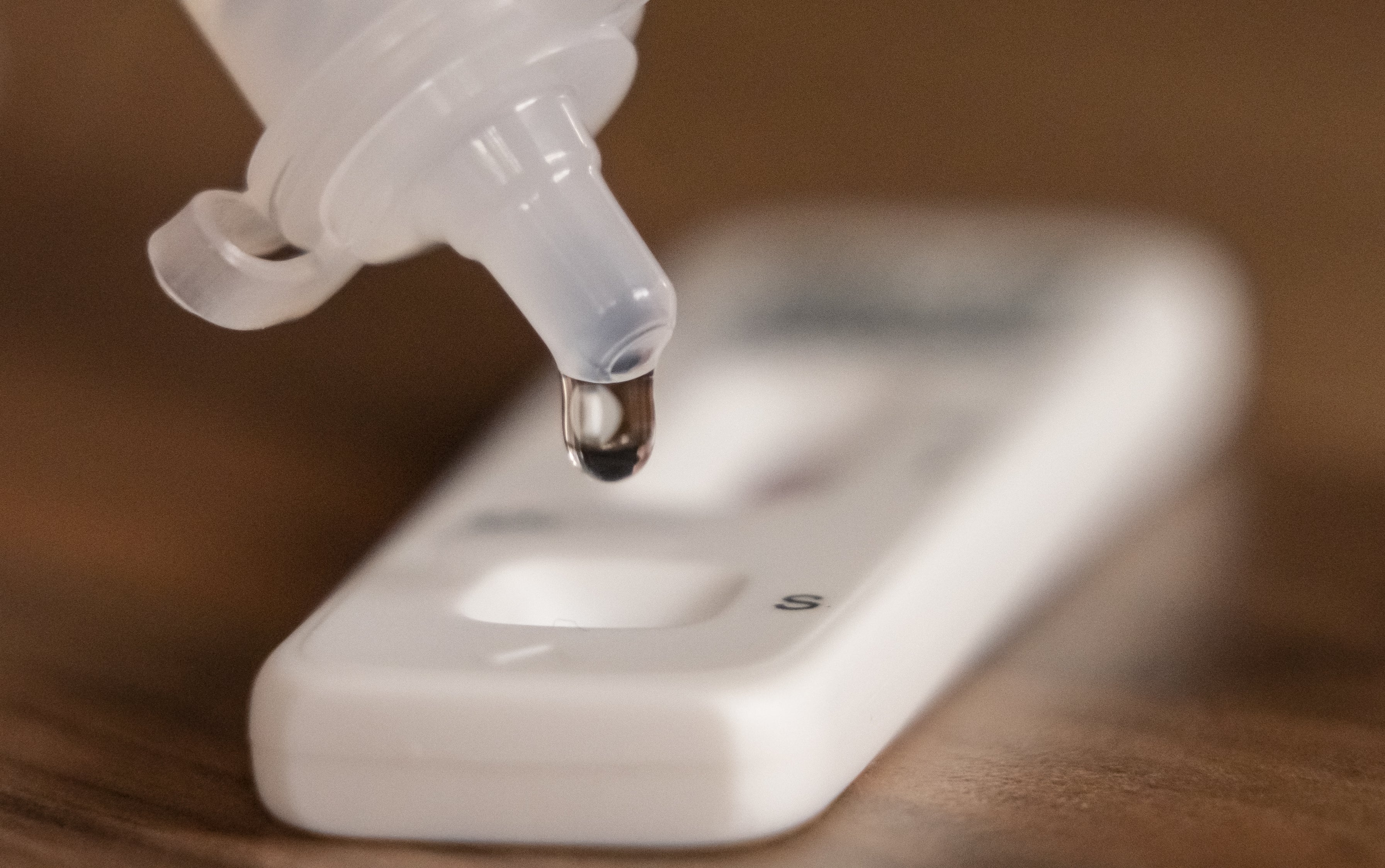Covid-19 infections in UK at lowest level for five months
Prevalence of the virus continues to decline in all four nations.

Covid-19 infections in the UK have fallen to their lowest level for five months, though there are signs the rate of decrease is slowing, figures show.
A total of 1.3 million people in private households are estimated to have had the virus in the week to May 13, according to the Office for National Statistics (ONS).
This is down 14% from 1.5 million the previous week and follows drops of 24% and 32% in the two previous weeks.
Total infections in the UK are now back to levels last seen in early December, when numbers had just started to rise due to the spread of the original Omicron variant.
Infections are now roughly a quarter what they were at the peak of the recent Omicron BA.2 wave at the end of March, when a record 4.9 million people were estimated to have Covid-19.
Prevalence of the virus has continued to decline in all four nations, the ONS said.
In England, infections have fallen for the sixth week running, with 1.0 million people likely to test positive for Covid-19, the equivalent of around one in 55.
This is down week on week from 1.2 million, or one in 45.
Wales has seen infections drop for the fifth week in a row, with 80,700 people estimated to have coronavirus, or one in 40, down from 88,300, or one in 35.
In Scotland, 122,200 people were likely to test positive for the virus in the seven days to May 13, or around one in 45.
This is down from 158,200 people, or one in 35, the previous week.
The virus continues to be least prevalent in Northern Ireland, where infections are at their lowest level since early November.
Some 29,800 people were estimated to have Covid-19 last week, or one in 60, down from 33,800, or one in 55.
The percentage of people testing positive for coronavirus has continued to fall in all regions of England except the South East and South West, where the trend in the most recent week was “uncertain”, the ONS said.
Rates are highest in the South West, where 2.3% of people in private households, around one in 45, were likely to have had the virus last week.
The West Midlands has the lowest rate, at 1.5%, or around one in 70 people.
Infection levels are estimated to have dropped among all age groups in England aged 35 and over, while the trend was “uncertain” for those aged 34 and under.
The highest rate is for 50 to 69-year-olds, at 2.2%, the equivalent of one in 45 people, while the lowest is for children from school year 7 to 11, at 1.1% or one in 90.
The figures come as the number of people with Covid-19 in hospital in the UK has fallen to its lowest level since the autumn, in a further sign the virus is becoming less prevalent.
A total of 6,879 patients were in hospital as of May 18, down 23% week on week, Government data shows.
It is the first time the number has dropped below the levels recorded throughout the winter and early spring, when both versions of the Omicron variant drove a surge of infections across the country.
It is also the lowest total since October 9 2021.
Figures for Covid-19 patients have been falling steadily for several weeks, having climbed as high as 20,544 on April 6.
But this was still well below the level reached during the second wave of the virus, when they hit 39,256 in January 2021.
The comparatively low numbers of people in hospital with coronavirus during the Omicron waves reflects the success of the vaccination programme, in particular the booster jabs rolled out in the autumn and winter of last year.
Boosters are estimated to have prevented around 186,600 hospital admissions among people aged 25 and over in England between December 13 2021 and April 17 2022, according to the UK Health Security Agency.
The Joint Committee on Vaccination and Immunisation (JCVI) recommended on Thursday that the Government offer another booster jab this autumn, to enable high levels of protection ahead of winter for vulnerable groups and frontline healthcare staff.